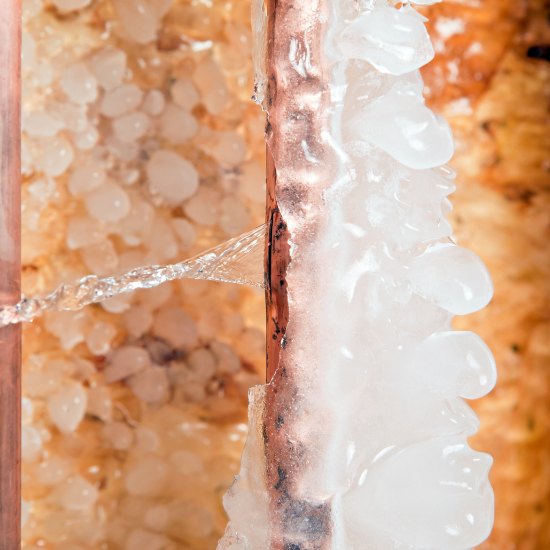When bitter cold air meets metal pipes, the water inside is at risk of freezing. As water turns to ice, it expands, adding pressure to your pipes. With nowhere to go, the expanding ice has the potential of bursting your pipes and triggering flooding inside your home.
All that water rushing into your house can create a terrible mess and damage your property. That’s why we prepared this guide on what to do if pipes freeze in your house and what steps you can take to prevent it.

What To Do If You Have Frozen Pipes
- If you know where the ice has formed, add some space heaters or heat lamps to the area to increase the temperature of the surrounding air.
- You can also try heating the pipe up with a hair dryer on the hottest setting.
If you’re unable to melt the ice, or you don’t know where the pipe is frozen, you’ll want to call a plumber right away before the ice has a chance to expand further and break your pipes. Once you’ve called the plumber, you may want to close the main water shut-off valve to your home and open some taps to limit the amount of water that might enter your home should the pipe burst.
To Prevent Pipes From Freezing, Try These Tips
- Outside taps or hose bibs are most vulnerable to freezing. It’s always best to drain them before winter arrives.
- Outside taps are paired with shutoff valves inside the home that should be closed. Then the taps can be opened to allow any water inside to drain out.
- You may also have pipes running through other parts of the house that aren’t heated such as the attic or garage.
- Make sure that the windows and doors to those areas are kept closed as much as possible to protect the pipes located there.
- If you go to your local home improvement or plumbing supply store, you’ll find heating tape or heat trace cables that can be installed on your pipes. These electrical devices maintain a constant temperature above the freezing point for your pipes.

